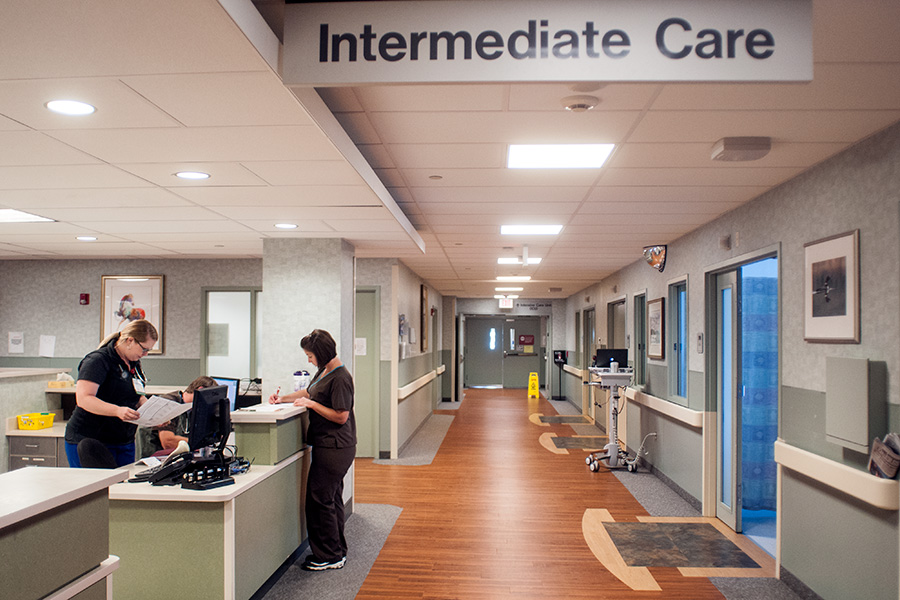CHIP Gets Momentary Reprieve, Long-term Funding Still Uncertain
President signs stopgap measure to keep Children's Health Insurance Program afloat, but full reauthorization remains unclear
By Molly Priddy
As federal lawmakers in Congress head for their year-end session break, the long-term future of the Children’s Health Insurance Program (CHIP), which insures 9 million children across the country, remains uncertain.
On Dec. 8, President Donald Trump signed a stopgap funding measure to avoid a government shutdown, and within that two-week spending bill, there was a provision to maintain CHIP. Congress is scheduled to end its session on Dec. 14 and reconvene in January.
According to the Associated Press, several states running out of CHIP funds will now be able to access existing, unused federal dollars under the stopgap measure, though Montana isn’t one of them. And if general CHIP funding isn’t reauthorized, it will affect the health insurance of more than 20,000 children in Montana.
Nationwide, CHIP covers about 9 million kids from lower- to middle-income families who are otherwise ineligible for Medicaid. The Montana Department of Public Health and Human Services includes CHIP in its Healthy Montana Kids program, which covers a total of 123,000 kids across the state.
According to DPHHS Spokesperson Jon Ebelt, Montana has enough unspent federal funding to continue the CHIP program through Jan. 31.
Despite other acrimonious issues in Congress, leadership on both sides of the aisle is expected to continue negotiating long-term reauthorization in the next few weeks.
In the U.S. Senate, Utah Republican Sen. Orrin Hatch sponsored the KIDS Act, which would reauthorize CHIP for five years. The bill has bipartisan support, including Montana Sen. Jon Tester, a Democrat, as a cosponsor. It was introduced to the Senate on Sept. 18.
“As the politicians who control Washington’s agenda prepare to add $1.5 trillion to the deficit to fund tax cuts for the wealthy, they need to be held accountable for playing political games with kids’ health insurance,” Tester said in a Dec. 11 statement. “CHIP not only provides Montana families with peace of mind–it provides life-saving health care for kids. No parent should have to choose between putting a roof over their kid’s head and providing an inhaler for their kid’s asthma.”
Montana Republican Sen. Steve Daines also supports reauthorization as a long-term solution.
“Families across Montana and our country rely on CHIP to keep their children healthy, which is why I support the program,” Daines said in a Dec. 11 statement. “I will keep working hard toward a long-term reauthorization and was pleased to support a stopgap measure recently that protects critical funding for CHIP while those negotiations continue.”
ACA Changes in Senate Tax Bill
Along with CHIP, Americans are curious about the outcome of other potential changes in health-care law, including changes made to the Affordable Care Act.
The U.S. Senate Republicans’ sweeping tax overhaul passed out of the chamber earlier this month, complete with changes not only to the American tax system, but also to the ACA, also know as Obamacare.
The tax bill, passed on Dec. 2, repeals the individual mandate of the ACA.
Including the ACA changes in the tax bill came after several failed attempts from Republicans to scrap the entire health care law.
Repealing the mandate but leaving the rest of Obamacare intact is expected to increase premium rates. According to the nonpartisan Congressional Budget Office, without the mandate, health insurance premiums are expected to rise 10 percent in most years through the next decade, resulting in 13 million people losing coverage by 2027.
The tax bill is not yet final; now that it is out of the Senate, it heads to the U.S. House of Representatives for adjustments, and then likely back through the Senate before it heads to the president’s desk to be signed into law.